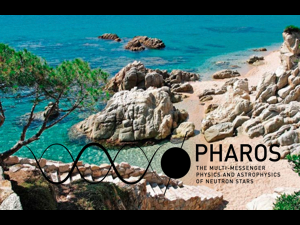Speaker
Dr
Mikhail Beznogov
(Instituto de Astronomía, Universidad Nacional Autónoma de México)
Description
A neo-neutron star is the next step in a neutron star evolution after the proto-neutron star phase. It begins $30-60$ seconds after the birth of the neutron star when neutrinos are free to escape and the crust of the neutron star is forming. This phase lasts about
$10^4$ seconds until the star "forgets" its initial conditions. Super-Eddington luminosities may still be present for some time. However, in the current work we do not consider mass loss and stellar winds and, thus, limit ourselves to luminosities not exceeding Eddington limit.
A neo-neutron star produced in a core collapse supernova is not observable but the one produced by a binary merger, likely associated with a short gamma-ray burst, may be observable for some time while the super-massive neutron star is supported by fast rotation. A neutron star envelope can also reach Eddington luminosity during an X-ray burst. In any case, investigation of this phase requires handling of the expansion and/or contraction of the star's outer layers.
We present the first part of our results of study of this neo-neutron star phase obtained with a modified version of a "standard" neutron stars' thermal evolution code, which was adapted to handle this regime. We investigated how long the star can have Eddington or near-Eddington luminosity and demonstrate that this depends greatly on the initial conditions unlike the "standard" cooling scenarios in which the initial conditions are quickly forgotten. One of the interesting findings was that the surface temperature actually maps the initial luminosity profile of the envelope, not the temperature profile as in the case of x-ray transients.
Primary author
Dr
Mikhail Beznogov
(Instituto de Astronomía, Universidad Nacional Autónoma de México)
Co-author
Prof.
Dany Page
(Instituto de Astronomia, Universidad Nacional Autonoma de Mexico)

